What does HIIT Workout mean?
Health is Wealth ( Small Changes Big Impact )
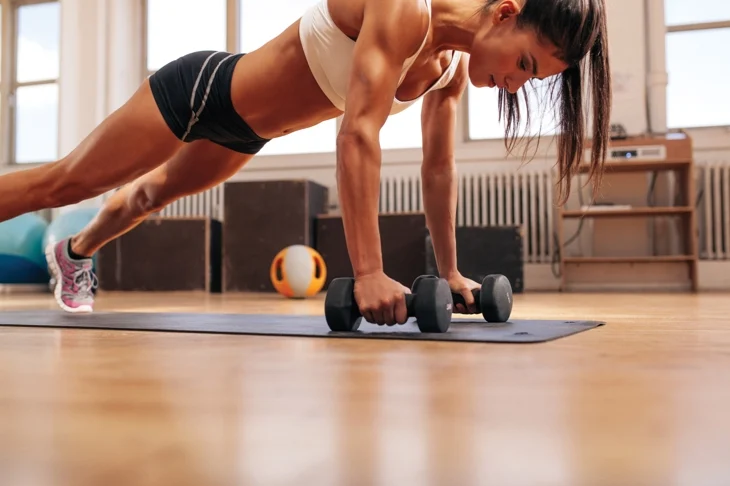
Workouts that alternate between brief but intense bursts of exercise (when you go all out for a period of time) and less intense active recovery have been demonstrated to be more successful than typical cardio and strength training for heart health, fat reduction and strength gain. And the best part? You receive all of those outcomes in less time.
High-Intensity Interval Training or HIIT is a popular and effective type of cardiovascular exercise that involves alternating short bursts of intense activity with brief periods of rest or lower-intensity activity.
The basic purpose of HIIT is to quickly elevate and sustain your heart rate at a high level for a short period of time, which can result in considerable fitness benefits in a very short workout duration.
HIIT workout for Fat loss?
HIIT increases cardio fitness nearly twice as much as longer stretches of moderate-intensity jogging, cycling or other aerobic exercises in people with heart disease, according to research.
In terms of strength gains in the body, HIIT exercises have not only been shown to generate the same level of strength increase as more traditional resistance training in a shorter length of time, but in certain situations, there were actually larger improvements in strength compared to traditional resistance training.
If you want to reduce weight, studies show that HIIT workouts may surpass standard cardio in terms of fat removal. This is due to the fact that HIIT workouts can boost fat burning and energy expenditure for hours after exercise.
Importance of HIIT Workout?

HIIT is an abbreviation for high-intensity interval training, which refers to the protocol’s short bursts of intensive activity followed by low-intensity rest intervals.
HIIT is speedy and far from dull, thanks to its precise work-to-rest ratios, which make it perhaps the most time-efficient way to workout and burn calories.
HIIT is an excellent method for burning calories and losing body fat. Intense bursts of exercise followed by brief rest intervals boost your metabolism and calorie burn, assisting in weight management and fat loss.
HIIT workouts are typically short, lasting 15 to 30 minutes, making them a time-efficient option for those with hectic schedules.
HIIT workout for Fat loss?
It also challenges your cardiovascular system, resulting in improved heart and lung function, increased stroke volume (the amount of blood your heart pumps with each beat) and decreased risk factors for heart disease.
It can increase your metabolism, resulting in ongoing calorie burn even after the workout is finished. The “afterburn” effect, also known as excess post-exercise oxygen consumption (EPOC) is caused by this.
HIIT training on a regular basis can dramatically enhance your endurance and stamina, allowing you to accomplish everyday tasks with less effort and thrive in sports and other physical activities.
HIIT unlike other forms of rigorous training, is less likely to result in muscle loss. In fact, it can aid in the preservation and even growth of lean muscle while also aiding fat loss.
HIIT workouts can be tailored to your fitness level and objectives. You may tailor the intensity, duration and exercises to your own needs. HIIT provides a variety of training options and modifications, preventing boredom and plateaus in your fitness regimen.
Many HIIT workouts require little or no equipment, making them suitable for a wide range of people, whether you want to train at home or have limited access to a gym.
It has been linked to enhanced insulin sensitivity, blood pressure, cholesterol levels and general metabolic health, in addition to its physical benefits. It can also improve mental health by lowering stress and elevating mood.
HIIT can enhance your body’s efficiency in utilising oxygen, resulting in better sports performance and overall fitness. Because it can be done almost anywhere, It is a versatile option for people who travel frequently or have limited access to exercise facilities.
The significance of High-Intensity Interval Training (HIIT) as a training routine stems from its amazing efficiency and effectiveness. HIIT provides individuals with a powerful tool for improving their fitness and general health in a short period of time.
Its capacity to efficiently burn calories aids in weight management and fat loss, making it very useful in our fast-paced lives. Furthermore, HIIT improves cardiovascular health dramatically, resulting in improved heart and lung function as well as lower risk factors for heart disease.
HIIT workout for Fat loss?
Its influence on metabolism extends beyond the workout, as the “afterburn” effect continues to burn calories thereafter. HIIT also increases endurance and stamina, which benefits both daily tasks and athletic performance.
This adaptive and versatile form of exercise requires little equipment and can be customised to different fitness levels, making it suitable for a wide range of people.
HIIT has become an essential component of current workout routines because to its multiple benefits improving both physical and emotional well-being.
HIIT Workout Benefits?

Well, There are several benefits of HIIT Workouts :-
High-Intensity Interval Training (HIIT) has numerous advantages that make it a standout training technique. To begin with, HIIT is a time saver; its brief, intense exercises can provide significant results in a fraction of the time required by typical training routines.
It’s a powerful fat burner that helps with weight management and fat loss by increasing metabolism both during and after exercise.
HIIT also improves cardiovascular health by enhancing heart and lung function and lowering the risk of heart disease. This type of training helps to maintain lean muscle mass, which is important for general strength and metabolic health.
HIIT is versatile, allowing a wide range of fitness levels and goals, and requires little equipment. Furthermore, its mood-boosting and stress-relieving properties make it a helpful tool for mental health. HIIT, in essence, provides a diverse and effective road to enhanced fitness, making it a staple of current training programmes.
HIIT workout for Fat loss?
Improves Cardiovascular Fitness
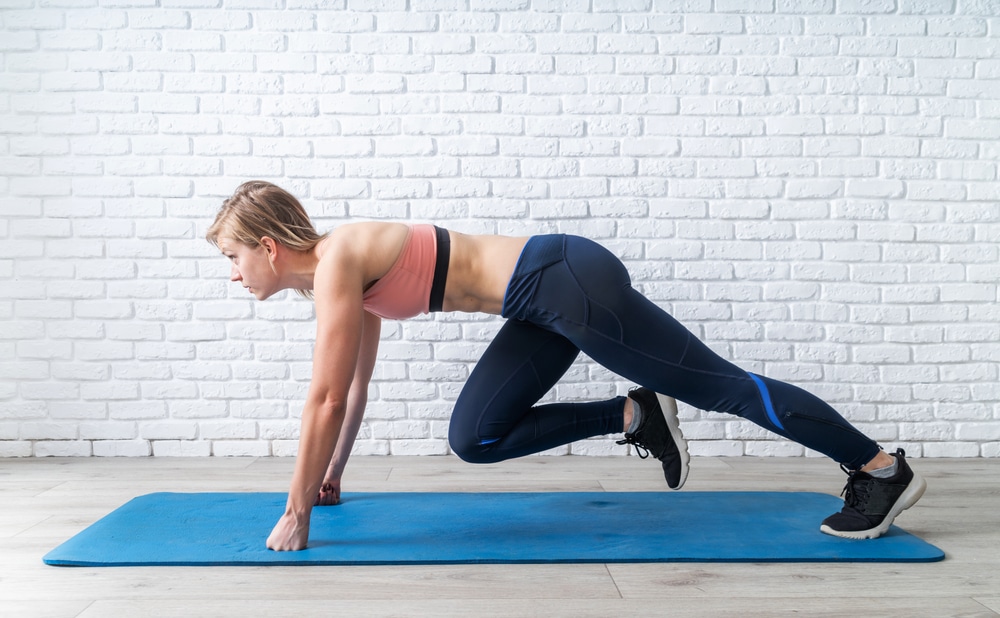
Your heart rate increases dramatically during the high-intensity intervals of HIIT. This forces your heart to pump blood at a higher rate, which can contribute to a stronger, more efficient heart over time. The amount of blood your heart pumps with each beat is referred to as stroke volume.
With each contraction, HIIT can boost stroke volume, allowing your heart to send more oxygen-rich blood to your muscles. HIIT boosts your body’s ability to use oxygen (VO2 max), which is an important indicator of cardiovascular fitness.
As you complete high-intensity intervals, your body learns to process oxygen more efficiently, allowing you to perform at higher intensities for longer periods of time.
Helps you build lean muscle and drop fat
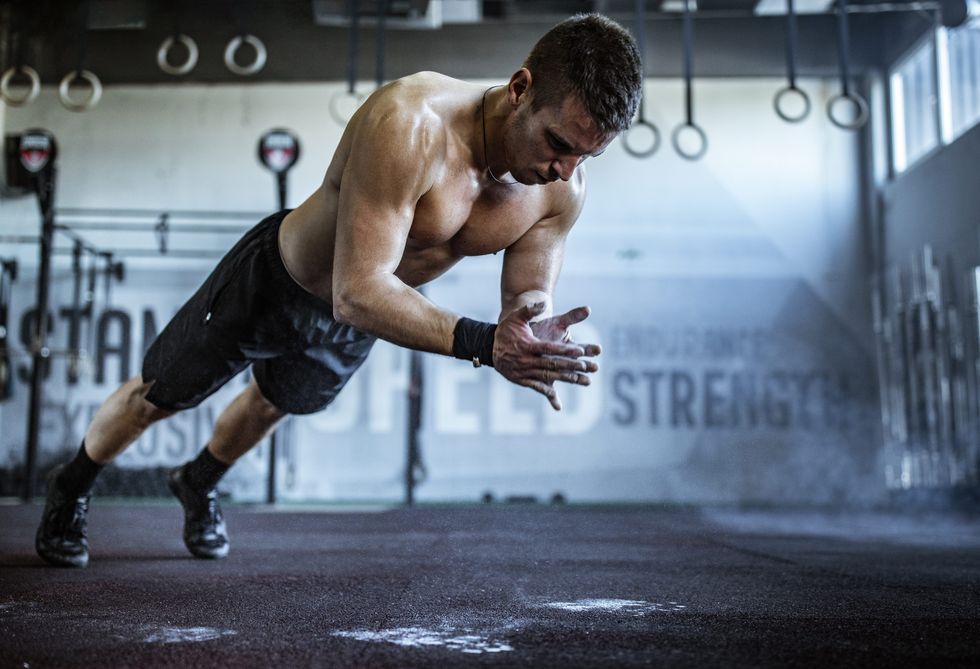
Due to numerous fundamental mechanisms and its impact on the body’s physiology, high-intensity interval training (HIIT) can be an effective technique for growing lean muscle and losing fat.
Short bursts of high-intensity exercise are followed by brief rest intervals or lower-intensity activities in HIIT exercises. These intensive intervals greatly increase your heart rate and metabolic rate, resulting in a high calorie burn both during and after the workout.
HIIT, unlike certain other types of cardiac training is less likely to cause muscle loss. In fact, HIIT can aid in the preservation and even growth of lean muscle mass. The extreme efforts of HIIT stimulate muscle fibres and encourage muscle growth, which can help you look toned and slim.
Retain muscle you already have

HIIT consists of short bursts of intensive exercise that target a variety of muscle groups. These strenuous efforts excite muscle fibres and encourage muscle growth. HIIT causes significant muscular activation, which aids in the preservation of existing muscle mass.
HIIT workout for Fat loss?
It also enhances our bodies’ ability to use nutrients for muscle repair and growth. It sends calories and nutrients to muscular tissue rather than fat storage.
Although HIIT is excellent for muscle retention, it is important to proceed with caution, especially if you are new to exercise or have certain medical issues. Always begin with an adequate degree of intensity and grow gradually.
Conditions your anerobic and aerobic energy

By engaging in brief bursts of intensive activity, HIIT improves anaerobic energy, which leads to increased power, lactic acid tolerance and muscle strength.
It also boosts aerobic energy by boosting heart rate, including active recovery and creating the afterburn effect, all of which improve cardiovascular endurance and total aerobic fitness.
HIIT is a popular choice for folks trying to enhance their overall fitness and stamina since it is a time-efficient and effective technique to target both energy systems.
Can be done anywhere, anytime

Yes, one of the most significant benefits of High-Intensity Interval Training (HIIT) is its adaptability, which allows it to be performed almost anyplace and at almost any time.
Yes, one of the most significant benefits of High-Intensity Interval Training (HIIT) is its adaptability, which allows it to be performed almost anywhere and at almost any time. HIIT workouts can be constructed with little or no equipment.
Many HIIT routines depend exclusively on bodyweight exercises such as burpees, jumping jacks or mountain climbers allowing them to be performed anywhere without the use of specialized gym equipment.
HIIT is extremely adjustable, allowing you to select exercises based on your tastes and available space. Running, cycling, swimming or even simple materials like resistance bands or a jump rope can be incorporated into your HIIT workout.
HIIT workout for Fat loss?
Helps you burn most calories while at rest

High-Intensity Interval Training (HIIT) can help you burn more calories at rest by causing a phenomenon known as Excess Post-Exercise Oxygen Consumption (EPOC), often known as the “afterburn effect.”
EPOC is the increase in oxygen consumption that occurs after an intense exercise session, and it can lead to increased calorie expenditure even when you’re at rest. HIIT exercises are distinguished by short bursts of intensive exercise followed by brief rest intervals.
Your body demands more energy during the high-intensity intervals, resulting in an increased metabolic rate. This means your body burns more calories during and soon after the workout.
Improves your athletic endurance
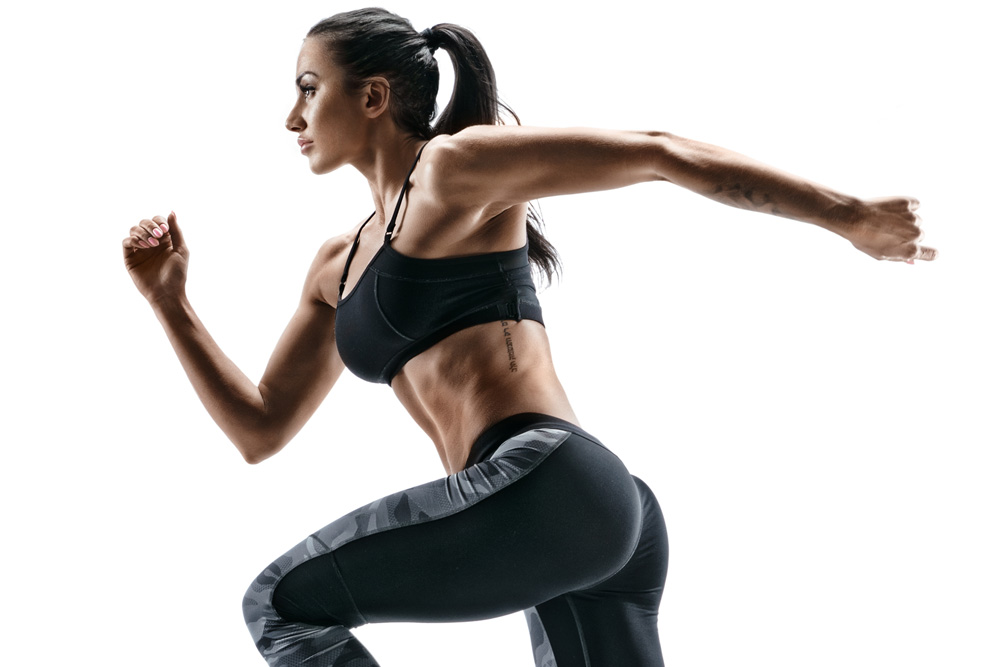
High-Intensity Interval Training (HIIT) can be an effective way to improve athletic performance in a variety of sports and hobbies. HIIT workouts stress the cardiovascular system by alternating between periods of intensive activity and active recovery.
This can result in improved cardiovascular endurance as well as a more efficient heart and lungs. Improved cardiovascular fitness is essential for maintaining high-intensity efforts in sports such as soccer and basketball, as well as endurance events such as distance running.
Increases your metabolism

High-Intensity Interval Training (HIIT) can increase your metabolism through various mechanisms, ultimately leading to greater calorie burn both during and after your workout and impacting your metabolism.
HIIT workout for Fat loss?
Your heart rate rises dramatically during the high-intensity periods of an HIIT workout. This increased heart rate necessitates more energy, resulting in a greater calorie burn during the workout when compared to moderate-intensity exercises. The higher metabolic rate during hard exercise periods causes increased calorie expenditure.
Although HIIT can increase your metabolism, it should be part of a well-rounded exercise regimen that includes a correct diet and rest.
To reap the metabolic benefits of HIIT, it must be integrated into a well-rounded workout regimen and practiced consistently. HIIT combined with a good diet and strength training will help you attain and maintain a healthy metabolism, which is essential for overall health and weight management.
No equipment required

Workouts, Including High-Intensity Interval Training (HIIT) Do Not Always Necessitate The Use Of Equipment. HIIT Is Noted For Its Adaptability And Ability To Be Performed With Little Or No Equipment, Making It Accessible To A Wide Spectrum Of People Regardless Of Access To Gym Facilities Or Workout Equipment.
Bodyweight Exercises: Squats, push-ups, burpees, jumping jacks and mountain climbers are common bodyweight exercises used in HIIT workouts. These workouts use only your body’s resistance and can be done anywhere.
Running or Sprinting: You may incorporate HIIT into your running programme by introducing sprints. For example, you could sprint for 30 seconds then jog or walk for 30 seconds to recuperate.
Squat jumps, Tuck jumps and Jump lunges are efficient HIIT exercises that require minimal equipment.
HIIT workout for Fat loss?
Bodyweight movements such as planks, bicycle crunches and leg raises are good for addressing the core during HIIT workouts.
Tabata: Tabata is a popular high-intensity interval training regimen that consists of 20 seconds of high-intensity activity followed by 10 seconds of recovery.
Varied workouts prevent boredom
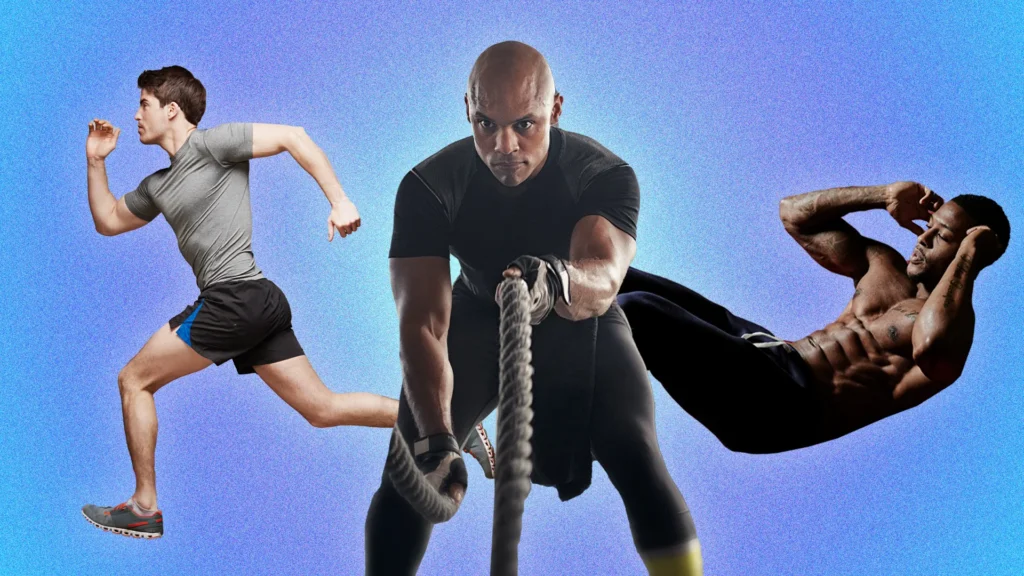
High-Intensity Interval Training (HIIT) provides a variety of training alternatives and variants, making it extremely adaptable to a variety of fitness levels, goals and preferences. HIIT’s adaptability allows you to design varied and entertaining workouts.
Bodyweight movements (e.g., squats, burpees, push-ups), aerobic activities (e.g., running, cycling, jumping ) and resistance exercises (e.g., kettlebell swings, dumbbell exercises) can all be included in HIIT. You can combine exercises to create your own program.
Pyramid-style HIIT workouts entail progressively raising or reducing the intensity or duration of intervals over the course of a workout.
Uses your time wisely, or 30 minutes or less

The optimal length for a High-Intensity Interval Training (HIIT) session depends on your fitness level, goals, and the precise HIIT program you choose. Because HIIT is noted for its time efficiency, workouts are usually shorter than standard steady-state cardio workouts.
Short bursts of high-intensity exercise are followed by brief recuperation intervals in HIIT workouts. Because these workouts are intended to be hard, the length is kept short in order to retain the high degree of effort and intensity. A normal HIIT workout might take between 15 and 30 minutes.
HIIT workout for Fat loss?
What HIIT workout is the best?

High-Intensity Interval Training (HIIT) is a versatile and successful approach to exercise that is appropriate for a wide range of people and goals. Some of the greatest HIIT workouts combine bodyweight exercises and cardiovascular activities to provide a full-body workout.
A typical HIIT workout would include burpees, jumping jacks, high knees and mountain climbers, all alternated with short, intense bursts of exertion and shorter recuperation intervals. Tabata, a well-known HIIT regimen, consists of 20 seconds of all-out activity followed by 10 seconds of recovery, repeated four times.
These workouts can be tailored to specific fitness goals, such as increasing cardiovascular endurance, boosting strength or burning calories for fat loss. HIIT workouts remain a popular choice for people trying to maximize their time and outcomes in the world of fitness due to its efficiency and versatility.
Here are some workouts that are best for HIIT:
Pushups
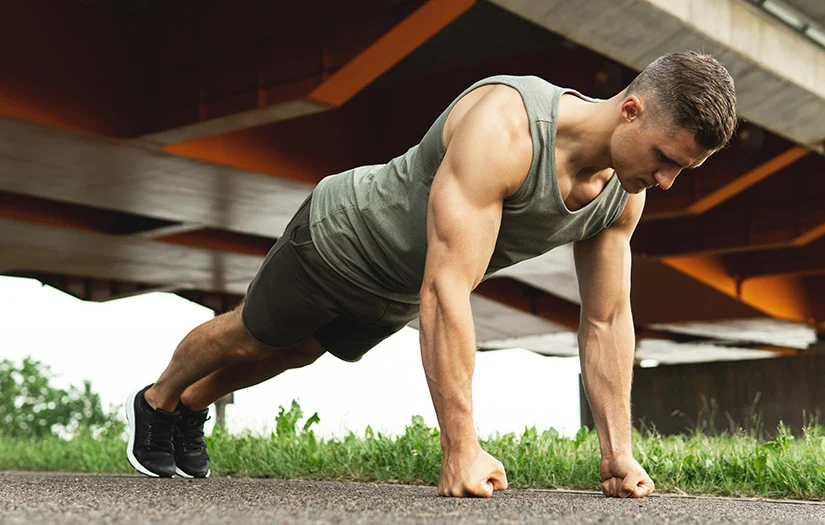
Push-ups can be a fantastic activity to add in a High-Intensity Interval Training (HIIT) workout if they are properly included. Here’s how to optimize push-ups for an HIIT exercise.
Push-up variations can be used to add diversity and challenge to your HIIT routine. Wide-arm push-ups, diamond push-ups, incline push-ups (with hands on an elevated surface), decline push-ups (with feet on an elevated surface) and explosive push-ups (plyometric push-ups) are all good options.
Perform the push-up variation of your choice with maximal effort during the high-intensity intervals. Experiment with explosive and controlled motions to engage numerous muscle groups, such as your chest, shoulders, triceps and core.
HIIT workout for Fat loss?
box jumps

When used in a High-Intensity Interval Training (HIIT) session, box jumps can be an effective and challenging exercise. Assemble a strong box or platform that is the right height for your fitness level.
It is critical for safety to have a box or platform that lets you land with good technique.
Begin with a suitable form. Place your feet hip-width apart in front of the box. Bend your knees and hips, then leap onto the box with your hips pressing forward. To cushion the shock, land softly with your knees slightly bent. Make certain that your full foot lands on the box.
thrusters
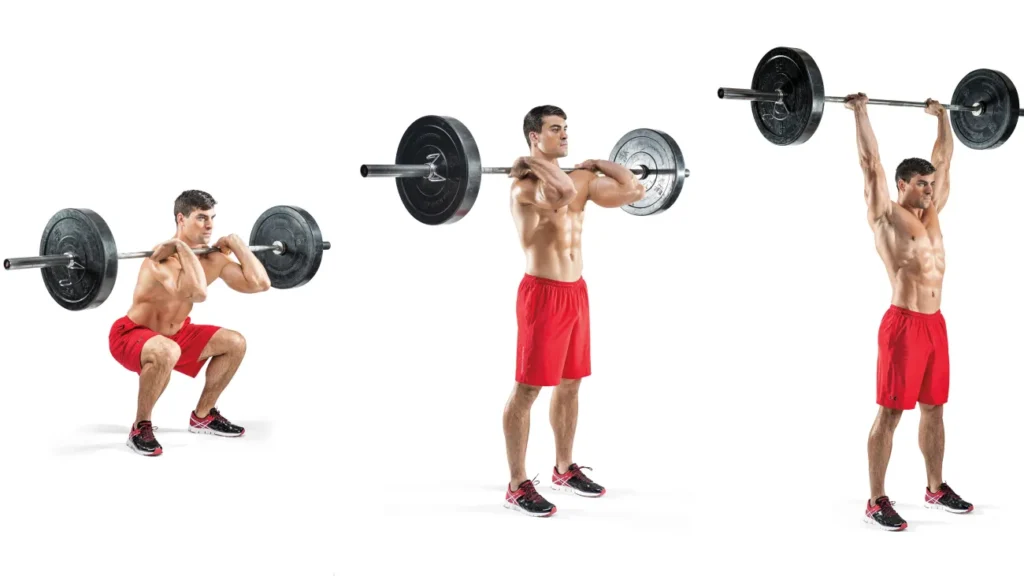
Thrusters are a wonderful exercise to include in an HIIT workout since they give a full-body challenge and can be tailored to varied fitness levels. Begin with suitable form.
A thruster is a combination of a front squat and an overhead press. Begin at shoulder height with the barbell or dumbbells, squat and then explosively push the weight overhead as you stand up.
During the squat, keep your knees over your toes and your core engaged. Thrusters can be done with a barbell, dumbbells, kettlebells or even a sandbag, depending on your equipment and preferences.
Perform thrusters with maximal effort during your HIIT workout’s high-intensity intervals.
mountain climbers
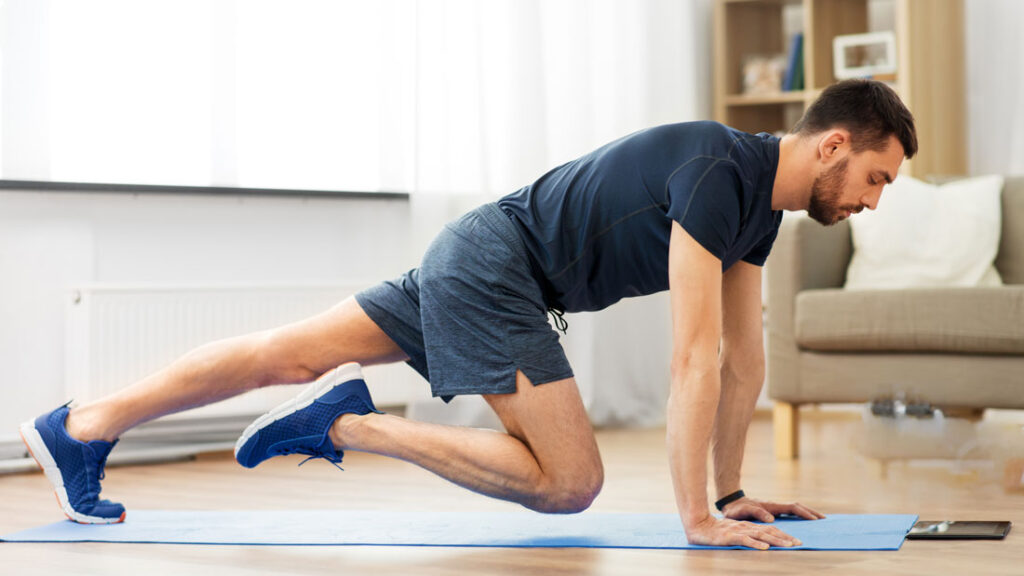
Mountain climbers are a fantastic cardio and strength exercise to include in a High-Intensity Interval Training (HIIT) workout since they train numerous muscle groups and raise your heart rate.
HIIT workout for Fat loss?
Begin by performing a push-up with your hands shoulder-width apart and your body in a straight line from head to heels. Maintain a strong core and keep your shoulders over your wrists.
As though you were ascending a mountain, alternate raising your knees towards your chest one at a time in a sprinting or jumping action. Incorporate mountain climbers into your HIIT routine’s high-intensity phase, which should last no more than 20–30 seconds to maintain a high level of intensity.
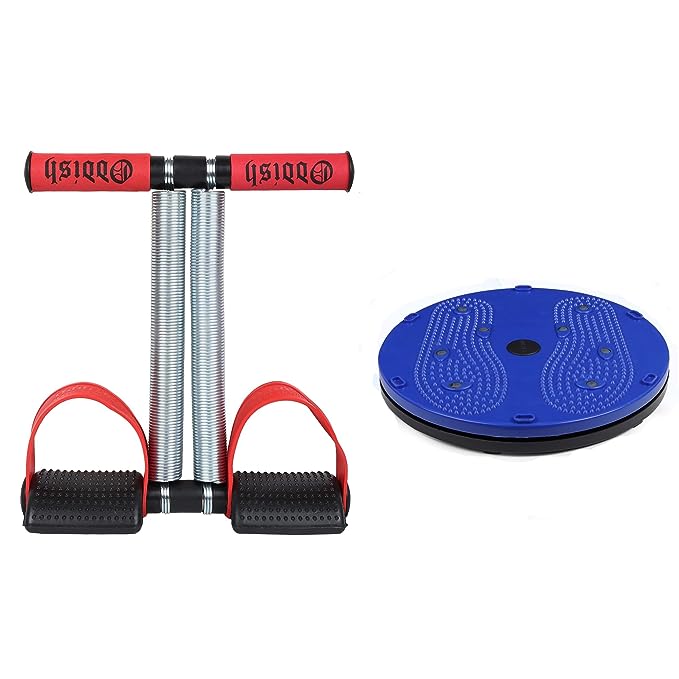
ODDISH: way to fitness Tummy trimmer Double Spring and Tummy twister Combo pack for Men and Women.
WAIST SLIMMING TUMMY TWISTER
COMPACT AND PORTABLE
DURABLE AND HIGH QUALITY
MULTICOLOUR DESIGN
Dumbbell bent over rows
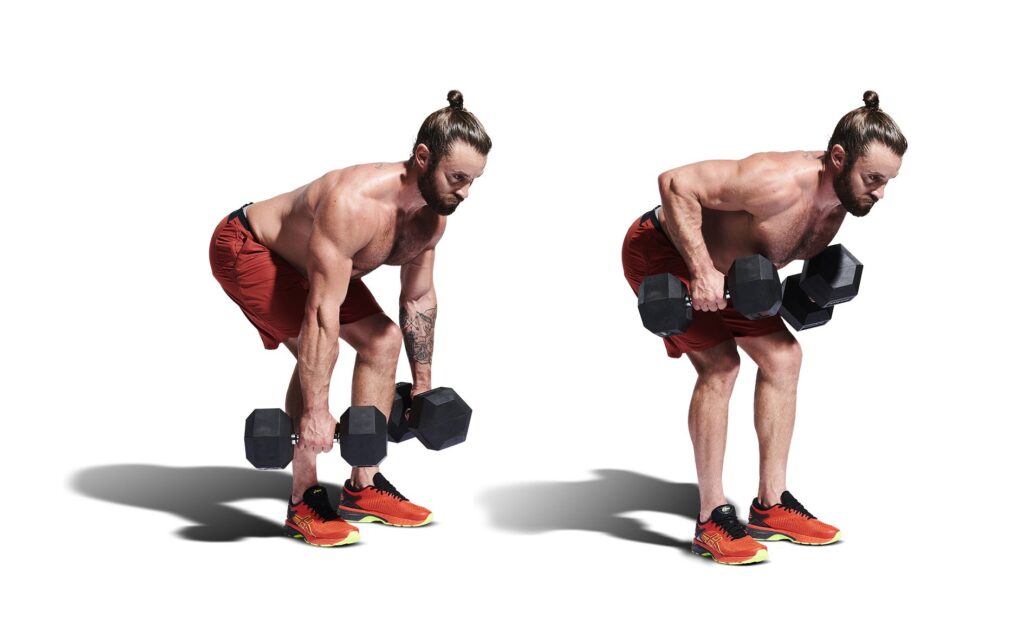
Dumbbell rows are an excellent exercise to include in a High-Intensity Interval Training (HIIT) workout, particularly if you want to target your back and upper body.
Begin with good form. Stand with your feet hip-width apart and a dumbbell in each hand. Bend your knees slightly, flex at the hips to lean forward and keep your back straight. Squeeze your shoulder blades together as you pull the weights toward your hips.
Return the dumbbells to the starting position with control. This exercise focuses on the muscles of the upper back. To add diversity to your HIIT routine, try several dumbbell row variants. Bend-over dumbbell rows, single-arm rows or renegade rows (a push-up followed by a row) are all good options.
Rowing machine
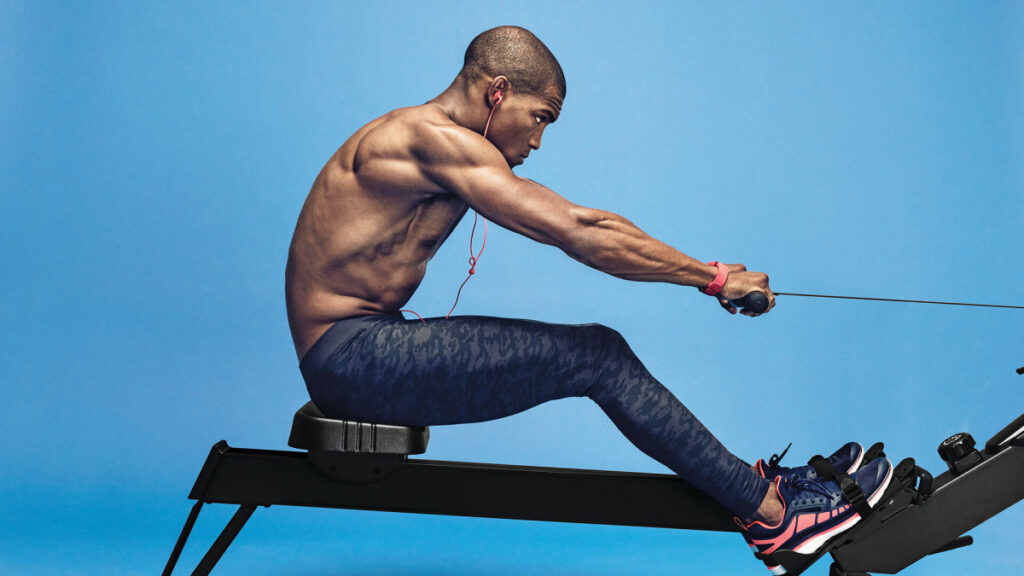
Because it delivers a full-body workout and can be customised to various fitness levels, a rowing machine is a great tool for High-Intensity Interval Training (HIIT) workouts.
Begin with an appropriate rowing technique. Sit on the rowing machine and secure your feet in the footrests. Take an overhand grasp on the handle, keeping your back straight, shoulders relaxed and core engaged. Push off with your legs, then lean back slightly before pulling the grip to your lower ribs and fully extending your arms.
To return to the beginning position, reverse this motion. Maintain a calm and flowing movement. Rowing can be incorporated into the high-intensity phase of your HIIT workout, which normally lasts for a short period of time, such as 20–30 seconds to maintain a high level of fitness.
HIIT workout for Fat loss?
Jump squats

Jump squats are a fantastic exercise for HIIT workouts because they mix lower body strength training with explosive plyometric movements, making them highly beneficial for boosting cardiovascular fitness and generating leg strength and power.
Begin with a suitable form. Stand with your feet shoulder-width apart and your toes pointing outward. Bend your knees and drive your hips back into a squat position, keeping your chest up and your back straight.
Jump into the air as high as you can, completely stretching your hips, knees and ankles. To cushion the shock, land softly with your knees slightly bent.
To add diversity and challenge to your HIIT workout, try different types of jump squats. Wide-stance jump squats, narrow-stance jump squats or jump squat tuck jumps (bringing your knees to your chest during the jump) are examples.
ball slams
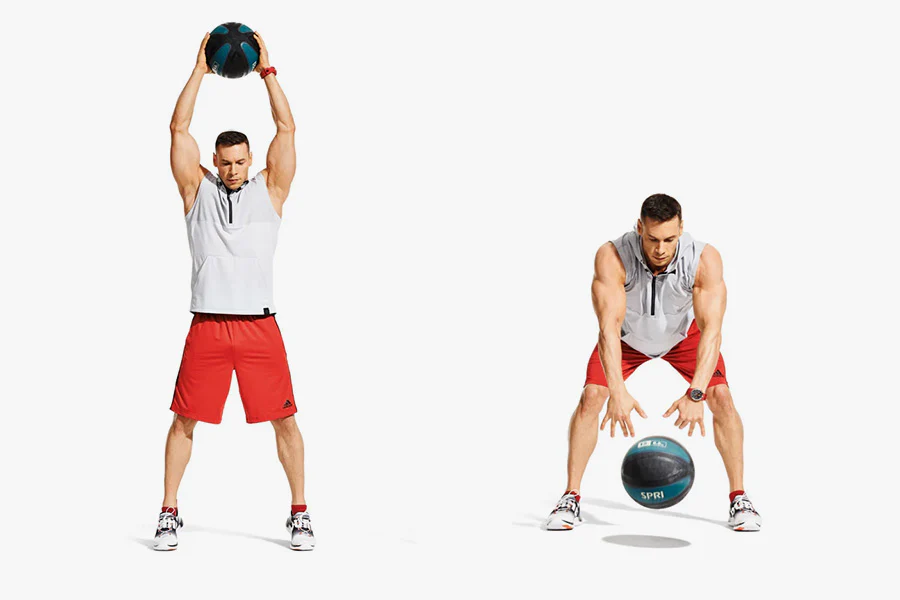
Ball slams are a terrific exercise for HIIT exercises because they integrate strength, power and aerobic factors, making them extremely useful for boosting overall fitness and burning calories.
Begin with a suitable form. Holding a medicine ball in both hands, stand shoulder-width apart, and engage your core. Lift the ball high, fully extending your arms.
Slam the ball into the ground in front of you with force, bending at the hips and knees. Catch the rebounding ball and repeat the process. Throughout the workout keep your spine neutral.
Incorporate ball slams into your HIIT routine’s high-intensity phase, which normally lasts for a short period of time, such as 20–30 seconds to maintain a high degree of intensity.
HIIT workout for Fat loss?
When to do HIIT Workout?
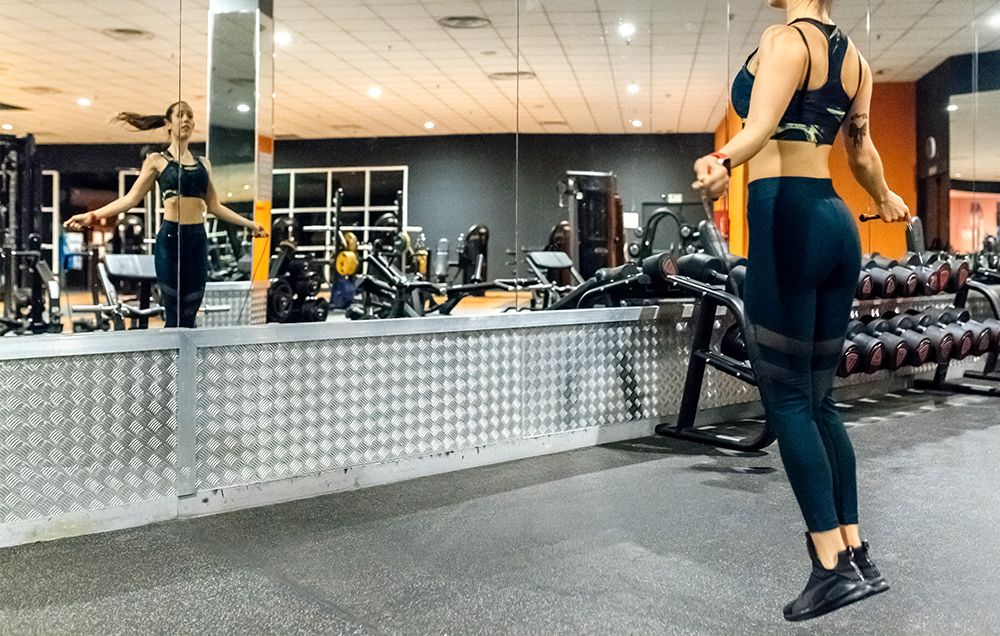
Your personal tastes, daily routine and fitness goals can all influence the timing of your High-Intensity Interval Training (HIIT) session.
Morning HIIT:-
Benefits: Morning HIIT can help jumpstart your metabolism for the day, give you more energy, and improve your mood and focus. It also assures that you complete your workout early in the day, allowing less chance for scheduling difficulties later in the day.
Considerations: It is critical to properly warm up, especially in the morning when your muscles may be stiff from sleeping. Allow time for light mobility exercises before beginning high-intensity intervals.
Afternoon HIIT:-
Advantages: HIIT in the afternoon can benefit from your body’s natural increase in body temperature and muscle flexibility, potentially leading to enhanced performance.
Consider your energy levels and avoid working out too soon after a large meal, since digestion can influence your workout comfort.
Evening HIIT:-
Benefits: Evening HIIT can help you de-stress after a long day, release pent-up energy, and sleep better by tiring your body.
Considerations: Avoid exercising too late in the evening because it may disrupt your sleep if done too close to bedtime. Allow at least a couple hours before retiring.
Lunchtime HIIT:-
Benefits: A lunchtime HIIT exercise can provide a reprieve from work or everyday chores, raise your energy, and assist you in remaining productive throughout the day.
Considerations: Because time limits may be an issue, having an efficient workout plan is essential. Make a post-workout meal or snack a priority.
HIIT workout for Fat loss?
Weekend HIIT:-
Advantages: On weekends, you may have more time to dedicate to longer HIIT sessions or to experiment with new routines. This can be a great opportunity to challenge yourself and explore different workouts.
Considerations: Ensure your weekend workouts align with your weekly fitness goals, and don’t forget to maintain consistency with your overall workout schedule.
Finally, the optimal time to undertake an HIIT workout is when it fits in with your regular schedule and when you are feeling the most energized and inspired.
Listen to your body and pick a time when you can do your HIIT workout safely and productively.
Because consistency is essential, schedule your HIIT exercises at a time that will make it easier for you to stick to your fitness plan in the long run.